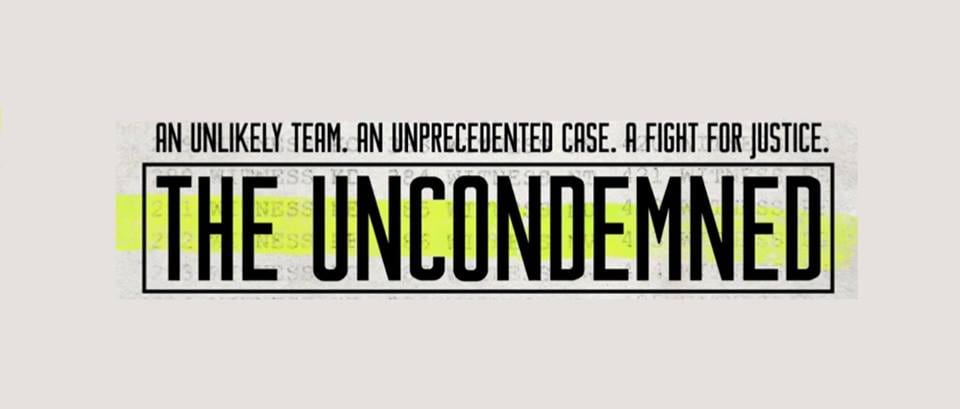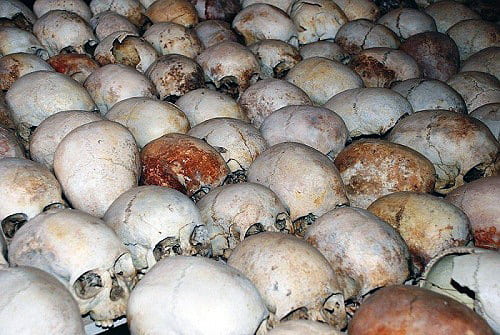Trigger warning: this blog references graphic physical and sexual violence. Please do not read if easily affected by these topics.

On Thursday, September 21, the University of Alabama at Birmingham’s Institute for Human Rights and UAB’s Women’s & Gender Studies Program hosted the screening of the documentary: The Uncondemned. The film explores the challenges and triumphs of a group of fledgling lawyers, investigators, and Rwandan women during a trial after the Rwandan Genocide. From their juridical victory, the legal definition of genocide was expanded to include acts of rape.
Background
Over the course of four months in the summer of 1994, roughly 800,000 Rwandan citizens were massacred in the east-central area of the country. The ethnic majority of Rwanda, the Hutu, murdered most of the Tutsi minority in an attempt of “ethnic cleansing” as a result of ethnic and religious tensions between the two groups. This decimation of the ethnic Tutsis became known as the Rwandan Genocide.

On April 6, 1994, a plane carrying General Juvenal Habyarimana, a moderate Hutu leader, was shot down by an unknown assailant. All the passengers on the plane crashed to their deaths, including the Burundian president, Cyprien Ntaryamira. Rumors place blame on the extremist Hutus for the murder as part of a revolt against the power-share agreement Habyarimana agreed to sign in accordance with the Tutsis. Another argument blames the Tutsis in the crash, using the act of terrorism as an attempt to regain power in Rwanda. Almost immediately after the plane crash, the murder of the Tutsi people began. Extremist Hutus began slaughtering Tutsis and moderate Hutus by setting up roadblocks and raiding homes. Radio stations ran by the extremists were encouraging civilians to attack and kill their neighbors.
The church played a significant role in the division among the Hutu and Tutsi. Hutu pastors preached on how “the war should be brought to the Tutsi, because they will come to wipe us away.” The church taught to kill their Tutsi neighbors as they claimed the Bible designated the Tutsi as their mortal enemies. During the genocide, not even the churches were safe. Hutu militiamen raided them and murdered anyone seeking refuge there. Pastors often trapped those hiding in the churches and alerted the Hutus.
The genocide was as horrifying as it was dehumanizing. Not all Hutu fighters had access to guns or even machetes, and much of the genocide was conducted using simple weapons such as sharpened sticks, large rocks, and common household items such as forks and knives – making death slow and painful. According to the film, bodies could be found in every village and on every hill. Its simplicity and scope earned it the title as the “most efficient genocide in modern history.” The first reconnaissance mission conducted by the United Nations (UN) reported one thousand Tutsi were killed in twenty minutes when the investigators first arrived.
Tragically, women endured gender based violence during the genocide. The total number of rape survivors will never be known, however countless women testified to being raped during the genocide. Stories of rape, whether gang-raped or with objects, are consistently mentioned. If they were not killed after being raped, the women were sold into sex slavery or forced into marriage. Additionally, they were traded among groups of men for them to sexually abuse them. Once the men were “done” with them, their reproductive organs were gruesomely mutilated with machetes, knives, bare sticks, or even acid. After pleading with her rapists to kill her, one woman testified they responded: she was to be kept alive so she would “die of sadness.”
The film shows the use of rape as a psychological weapon to strip the humanity from more than just the individual Rwandan woman. The rapists wanted to both degrade larger groups of women the rape survivors were a part of and as a means to assert their superiority and population control. Throughout the history of armed conflict, women often become the targets of sexual violence– this is a common weapon used in larger crimes against humanity, such as genocide. Whether it comes in the form of physical abuse, rape, mutilation, or sex slavery, being a woman becomes a risk factor – no matter the age, religion, ethnicity, political affiliation, or any other characteristic outside of biology. Niarchos concludes rape is used to inflict terror and force cooperation, both on the female survivor and others in her close community. In Rwanda’s case, rape was used to humiliate Tutsi women and terrify the community as a whole; making the suffering of Tutsi women a violent means to the Hutus’ political end.
The UN declared rape as a war crime in 1919, however in cases prior to the Rwandan Genocide, rape was never prosecuted in this manner. In Resolution 1820 that was adopted by the Security Council at its 5916th meeting, of the UN Security Council noted “women and girls are particularly targeted by the use of sexual violence, including as a tactic of war to humiliate, dominate, instil fear in, disperse and/or forcibly relocate civilian members of a community or ethnic group.” The International Criminal Tribunal of Rwanda (ICTR) was the first time rape was pursued as a war crime and was the first tribunal enacted since World War II. The film, The Uncondemned, tells of the efforts taken by the UN to connect rape to genocide. The documentary focuses on the case the mayor of Taba, Jean Paul Akayesu, who was the first to face charges of inditement over genocide – including rape.
The team of lawyers sent by the UN was ambitious but inexperienced. Most were in their 30s, recently graduated from law school, and were taken to task by gathering intelligence to prosecute this case that was like none before it. More importantly, they deduced they must prosecute it in a way that laid the groundwork for future cases – setting legal precedence.

Doctor Odette Nyiramilimo of Le Bon Samaritain Clinic in Kigali was one of many doctors who said almost every woman and adolescent girl who survived the Rwandan Genocide was raped. As she examined victims immediately after the genocide, she asserted that at least two cases of rape were coming in each day to her clinic. As mentioned before, the exact number cannot be known, which is due to a number of factors such as the stigmatism that surrounds rape. Across the globe, rape survivors are shamed and seen as guilty for the violent crimes committed against them. Eisler asserts this is especially prominent in societies that value men over women. Fear of reprisal compromises the reporting of rape, and this is particularly true in the case of Rwandan survivors. Bernadette Muhimakazi, a Rwandan women’s rights activist in an interview with Human Rights Watch, states many of the women were afraid to say anything because they know who their perpetrators are. These women know exactly who killed their families and who violated them. In many cases, these women live in the same community as their perpetrators.
“Women here are scared to talk because it was their neighbors who raped them.”
– Bernadette Muhimakzai
Prior to the visibility the tribunal brought, rape was viewed as a negligible outcome of war. The testimonies of the Rwandan women changed this perception, and rape was legally billed as a true war crime. The team the UN pulled together to prosecute this case proved to be successful in their endeavors, and justice prevailed; Akayesu was convicted of crimes against humanity and acts of genocide. The film concludes with rape survivors coming forth to name their rapists. While their sense of inner peace may never be fully restored, the tribunal gave the women a sense of justice and vindication.
